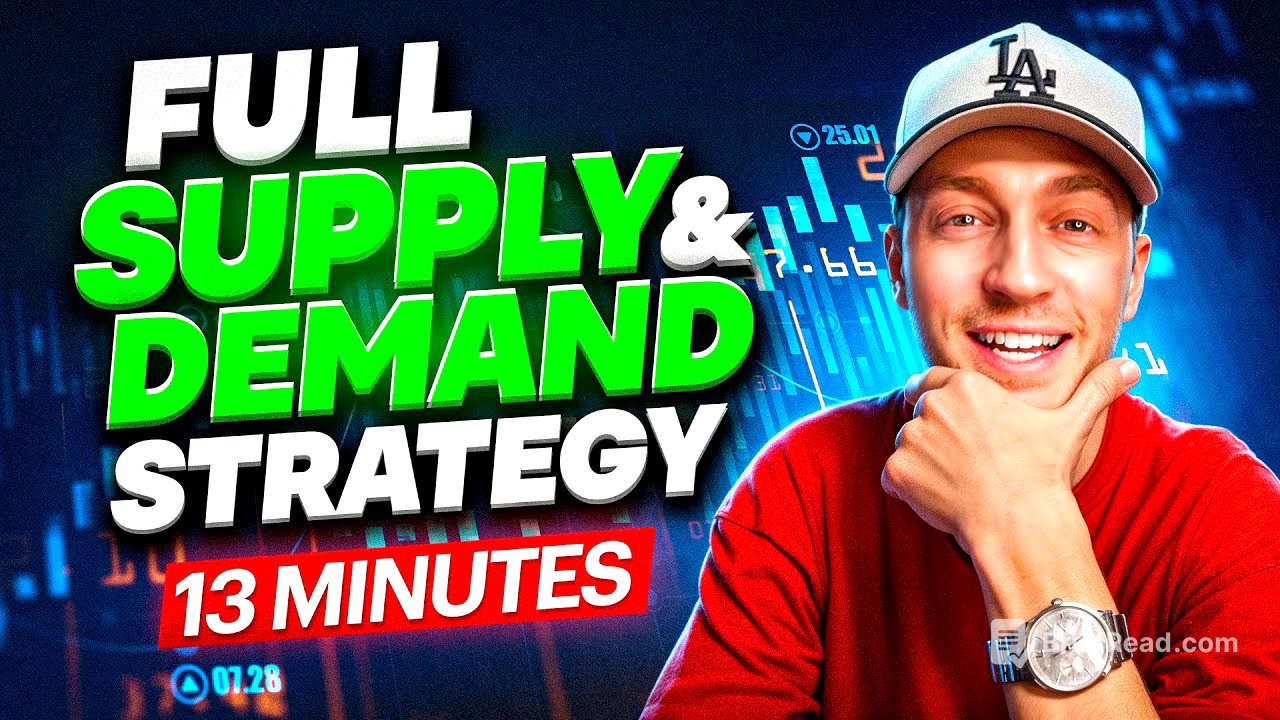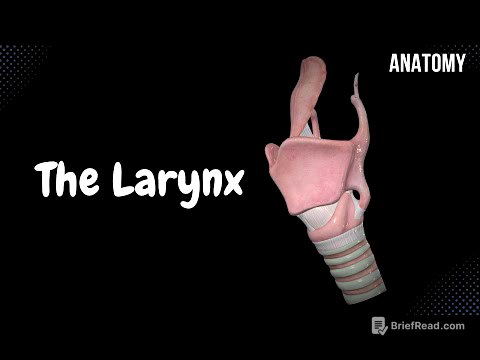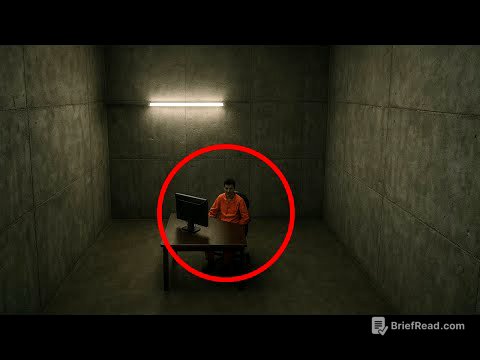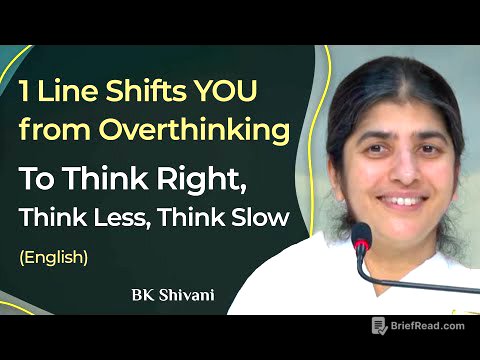TLDR;
This video by Trade with Pat explains a supply and demand trading strategy that he has been using for 16 years. He breaks down the strategy into four steps: drawing supply and demand zones, understanding why they work, identifying powerful zones, and combining everything into a complete scalping strategy. The video uses real trade examples from Pat's live streams to illustrate the concepts.
- Supply and demand is a consistently profitable trading concept.
- The strategy involves identifying zones where institutional order blocks, trapped traders, and liquidity influence price movement.
- A full scalping strategy is provided, incorporating time frame settings, indicators, and specific rules for entry and exit.
Introduction [0:00]
Pat introduces a supply and demand trading concept that has been consistently profitable for him over 16 years. He mentions that when traders see an aggressive price push, they often think they've missed the move, but this push actually creates a level of demand that can be used for the next trade. He will teach how he uses supply and demand in his trading with a full strategy, but doesn't guarantee any results.
Live Stream Supply & Demand Trade [0:46]
Pat shares an example from his live stream where he used supply and demand. The price made an aggressive move up with three big green candles, creating a demand level. The price then retraced back to that level, and he entered a trade that quickly hit his take profit. He confidently took this trade in front of thousands of people because he trusts his analysis. He will teach how to use supply and demand in four steps: drawing zones, understanding why they work, identifying powerful zones, and a complete scalping strategy.
Step 1: Drawing Supply & Demand Zones [2:05]
The strategy works on any time frame, but Pat prefers M5 or M15. He trades supply and demand on every forex pair, Bitcoin, gold, US30, NASDAQ, and oil. In an uptrend, you look for buy demand zones, and in a downtrend, you look for supply zones. Price should retrace back to the demand or supply zone. Using the Fibonacci retracement tool, you look for price to come down to the 100% retracement level. When price reaches that level, you look to go long in an uptrend and short in a downtrend. He shows examples of trades he took on stream, pointing out how price reacted to demand zones. He draws the zone on the indecision candle before the big push up, or you can cover the consolidation.
Step 2: Why Supply & Demand Zones Work [6:14]
Supply and demand works because of institutional order blocks, trap traders, and liquidity. When there are huge green candles, it means banks, hedge funds, and multi-million dollar funds pushed the price up. These institutions can't get all their orders in at once, so the orders stack up. When the price comes back down, it starts catching those orders again on the way up. Retail traders often get trapped when they see a huge push up and buy, but institutions push the price back down to hit their stop losses. The opposite happens when retail traders sell after a big push down.
Step 3: Powerful Supply & Demand Zones [8:20]
A powerful zone needs a clear impulsive move with multiple fair value gaps on candles not being covered, indicating strong imbalance. The move should also break through the trend line. The level of supply or demand should be fresh and untouched. The zone should be close to the breakout. The bigger the candles on the way down or up, the better.
Step 4: Full Strategy [10:22]
For the full scalping strategy, set the time frame to 5 minutes and the time to UTC minus 4 New York. Use the "opening range with breakouts" indicator, setting the time period to 15 minutes (9:30 to 9:45 UTC minus 4). The indicator shows the open range high and low for the first three candles of the New York Stock Exchange open. If the price breaks above the range, you want to buy; if it breaks below, you want to sell. Look for a pullback to a demand zone in an uptrend or a supply zone in a downtrend. Enter the trade when the price enters the zone, placing the take profit higher and the stop loss below the demand zone and range low.
Conclusion [12:22]
Pat encourages viewers to watch his live streams and his "one strategy for life" video for more details. He asks viewers to like the video, subscribe to the channel, leave comments, and consider joining his VIP trading room.









![[LIVE] Nebius Group (NBIS) Q2 Earnings Report & Conference Call](https://wm-img.halpindev.com/p-briefread_c-10_b-10/urlb/aHR0cDovL2ltZy55b3V0dWJlLmNvbS92aS90dm9oT1ZtaWxYby9ocWRlZmF1bHQuanBn.jpg)